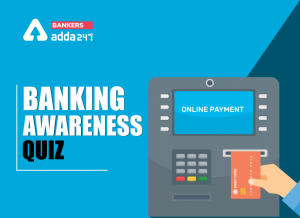
Q1. From the given options, bring out the one which is not a function/power of Reserve Bank of India?
(a) To assume the responsibility of meeting directly or indirectly all reasonable demands for accommodation
(b) To hold cash reserves of the commercial banks and make available financial accommodation to them
(c) To enjoy monopoly of the note issue
(d) None of the above
Q2. Many a times we read in the newspapers about margin requirements. From the given options, find out the one which correctly indicates margin requirement?
(a) Margin requirements aim at the regulation of the volume of credit as well as flow of the credit
(b) Margin requirements imply that every bank has to keep certain minimum cash reserves with the Reserve Bank of India
(c) Margin requirements imply that every bank has to keep certain proportion of its total deposits in the form of cash with it self
(d) Margin Requirement is the percentage of marginable securities that an investor must pay for with his/her own cash
Q3. What will be the impact on the cash reserves of commercial banks of RBI conducts a sale of securities?
(a) Increase
(b) Decrease
(c) Remain constant
(d) Increase or decrease
Q4. Which among the following is a major qualitative control measure in India?
(a) Bank Rate Policy
(b) Open Market Operations
(c) Reserve Ratio Requirements
(d) Margin Requirements
Q5. Many a times we read in the financial newspapers that Reserve Bank of India is “Lender of Last Resort (LOLR)” in India. Which among the following statement gives the most correct definition of “Lender of Last Resort”?
(a) If a person or firm which is eligible to get a loan, does not get if from any commercial bank, may approach to Reserve Bank of India for loan.
(b) If the state governments are in crisis and need money for short term, they can approach RBI for this purpose.
(c) If a commercial bank is in crisis, it many place its reasonable demand for accommodation to Reserve Bank of India.
(d) A scheduled commercial bank meets all of its demands in all weathers from Reserve Bank of India
Q6. (The figures in this questions are imaginary). We suppose that Cash Reserve Ratio (CRR) in country’s economy is 10%. The banking system wish a cash deposits of Rs. 1000 Crore, creates total deposits of Rs. 10,000 Crores. The Reserve Bank wishes that bank should create more deposits. Which among the following step will be taken by the Reserve Bank?
(a) It will lower the Cash Reserve Ratio
(b) It will raise the Cash Reserve Ratio
(c) It will increase the Margin Requirements
(d) It will start selling Government Securities
Q7. Many a times we read in the newspapers that RBI takes certain steps to curb the menace of Inflation. In this context, which among the following will not help RBI in controlling the inflation in the country?
(a) An increase in the Bank Rate
(b) An increase in the Reserve Ratio Requirements
(c) A purchase of securities in the open market
(d) Rationing of the credit
Q8. We suppose that Reserve Bank of India would like to increase the cash Reserves of the commercial banks. Which among the following would be most appropriate action of the RBI to achieve this aim?
(a)RBI would release gold form its reserves
(b) RBI would raise the reserve ratio
(c) RBI would buy the bonds in the open market
(d) RBI will stop the transactions which involve the bills of exchange
Q9. Which among the following is a incorrect statement?
(a) The Reserve Bank of India has the special powers to control and regulate the commercial banking system
(b) A rise in the bank rate is a strong anti-deflationary monetary tool
(c) Minimum Reserve Requirements are fixed to ensure the liquidity and solvency of individual commercial banks
(d) Reserve Ratio Requirements is a quicker method than bank rate and OMO (Open Market Operations) in general credit regulations
Q10. Since which year, Reserve Bank of India is using the Selective Credit Control measures to control the amount of bank advances against the commodities having limited supply?
(a) 1949
(b) 1956
(c) 1969
(d) 1973




 Banking Awareness Quiz for Bank Exam: 30...
Banking Awareness Quiz for Bank Exam: 30...



